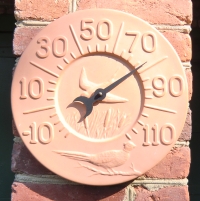How Can Community Based Social Media Support the Next Census?
 A recent AP article titled Census: Big Brother anxieties could hurt count reports official concern that the next US census is threatened by public anxiety about government activities such as immigration control and anti-terrorism measures. This made me wonder how the Census Bureau will be training its employees to overcome this public concern, and how collaborative technologies such as social networks might be used to share “best practices” among Census staff with community relations responsibilities.
A recent AP article titled Census: Big Brother anxieties could hurt count reports official concern that the next US census is threatened by public anxiety about government activities such as immigration control and anti-terrorism measures. This made me wonder how the Census Bureau will be training its employees to overcome this public concern, and how collaborative technologies such as social networks might be used to share “best practices” among Census staff with community relations responsibilities.
U.S. Census Bureau director Steve Murdock is quoted:
“We have a lot of fear about government intrusion; we have a very contentious debate going on about immigration,” the agency’s director, Steve Murdock, told The Associated Press.
To combat people’s hesitancy, the bureau will work with local governments and organizations such as churches and community groups to make sure people understand what the census is and that the data won’t be shared, Murdock said.
This is serious problem. We need these numbers to do all sorts of planning, congressional redistricting, and benefit distribution. Unfortunately, given recent history, people are also concerned that government-collected data might be used for reasons other than what is stated officially.
Here’s a timeline of upcoming Census events; as you can see, events for the 2010 census are already underway:
| Fall 2008 | Recruitment begins for local census jobs for early census operations. |
| Spring 2009 | Census employees go door-to-door to update address list nationwide. |
| Fall 2009 | Recruitment begins for census takers needed for peak workload in 2010. |
| February – March 2010 | Census questionnaires are mailed or delivered to households. |
| April 1, 2010 | Census Day |
| April – July 2010 | Census takers visit households that did not return a questionnaire by mail. |
| December 2010 | By law, Census Bureau delivers population counts to President for apportionment. |
| March 2011 | By law, Census Bureau completes delivery of redistricting data to states. |
As an example of the “community outreach” described by Murdock in the AP article, here is an extract from a recently announced (August 2008) “partnership specialist” position:
DUTIES: The incumbent of this position serves as a Partnership Specialist. The Partnership Specialist is responsible for developing partnerships with state, local, and tribal governments; community-based organizations, faith-based groups; schools; media outlets; businesses; and other grassroots entities in communities within the regional office area. The Partnership Specialist also provides support to census field operations such as Recruitment, Be Counted, Questionnaire Assistance Centers, Non-Response Follow-Up, and others.
I’ve suggested elsewhere that social networking might have a role in promoting community level energy conservation. Moreover, anyone paying any attention to how the web is being used to recruit and manage volunteer effort in the current US presidential campaign will see how useful web based methods are in promoting and managing grassroots local communication efforts. It’s easy to imagine how existing online tools and techniques could be adapted to support the upcoming Census, for example:
- For a given community, establish a web site about the census process and how the community benefits.
- Clearly identify all census staff with direct links to the conduct of the census in that community. Names, pictures, interests, and contact information are critical. Do the same for community representatives who also agree to participate.
- Maintain and update a calender of local events (e.g., speeches at local community organizations, presentations, training sessions, etc.).
- Post audio and video of these local events.
- Record and distribute questions and answers.
- Maintain interactive discussions that surface, as much as possible, fears and concerns about Census data and how it will be used.
- Give members of the community an opportunity to clearly discuss and state their concerns and issues.
- Provide a mechanism for community representatives to “promote” or “escalate” important questions and answers when wider sharing seems appropriate.
- Provide a mechanism for regional management to monitor local activities and to communicate information to local representatives when that is appropriate.
Note that such a web oriented approach will only be one of many methods used to reach the public directly to address concerns about the Census. Those without web access will need to be reached using more traditional means. Plus, the ability to set up and manage a large number of such networks needs to be accomplished with close attention to information technology architecture (e.g., think about scalability) and communication costs in order to maximize the compatibility of local efforts.
One thing to avoid is use of social networking and social media as just another medium for broadcasting messages one-way. That’s how some local governments are using tools such as Facebook, MySpace, and YouTube. By doing so, the ability to use such mechanisms to engage in two-way conversation with citizens about their concerns about the census will be shortchanged.
Given that community specialists are already being recruited by the Census Bureau, is it still possible to incorporate social media and social networking at the local level?
Copyright (c) 2008 by Dennis D. McDonald